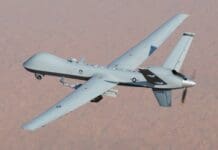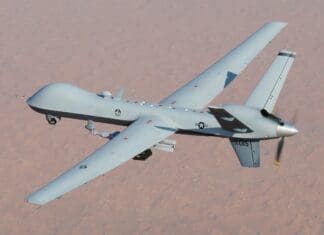This post is also available in:
 עברית (Hebrew)
עברית (Hebrew)
NATO members are accelerating efforts to cooperate on the development and fielding of unmanned maritime systems, according to an agreement signed by the defense heads of 13 NATO allies.
In July, the powers signed onto a plan to jointly pursue technologies aimed at mine and sub hunting.
According to a news release, “the use of unmanned systems is a potentially game changing leap forward in maritime technology,” the release read. “Working alongside traditional naval assets, these unmanned systems will increase both our situational awareness and our control of the seas.”
The release seems to open up the possibility that development of underwater and surface drones could be even more lucrative for companies involved, as it hints at the alliance seeking common, interoperable systems.
That means a proven drone might be competing for business in 13 markets simultaneously instead of just one.
The agreement reflects the ever-expanding role of unmanned systems in the underwater domain, which countries are banking on to offset the ever-quieter and more advanced submarines.
Additionally, the underwater battle space extends not only to the undersea domain but all the way to the ocean floor, which is home to everything from pop-up mines to undersea internet cables that transmit the vast majority of the world’s data.
That means the alliance will need to know more than ever about what’s on the sea floor. In that arena, experts say that underwater systems — be it drones or stationary systems — will be necessary to monitor crucial chokepoints.
Developing and using autonomous underwater unmanned vehicles has proven to be a challenge. The issues are multifarious, but they boil down to three core problems: communications, navigation and endurance.
Underwater drones are showing promise in the areas of mine hunting and mine sweeping, but perhaps even more promising — in terms of becoming an adequate stand-in for an attack boat — are some of the surface drones in development.
The agreement reached by 13 NATO powers is just the latest indication of how countries see unmanned systems impacting the future of warfare, as reported in defensenews.com.


























